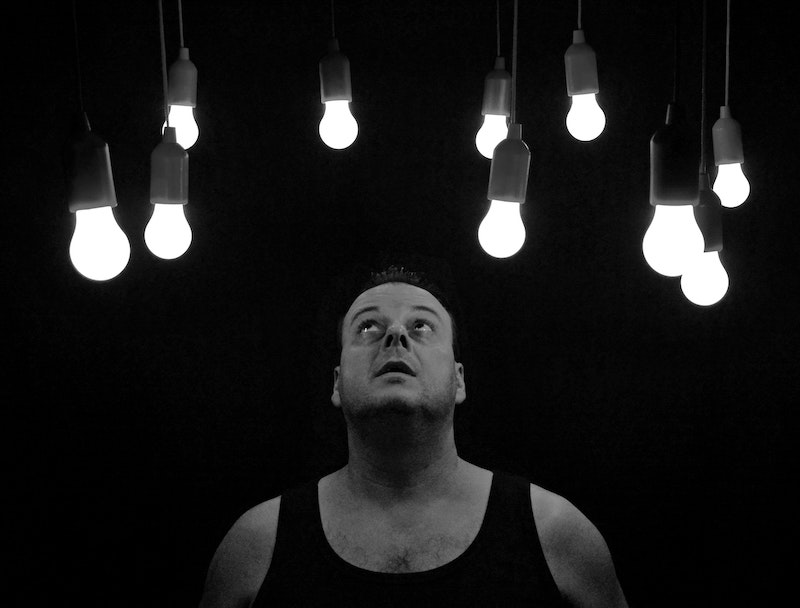Using LED Lightbulbs To Save Money? Think Again!
Of all the homes I’ve assessed for EMFs, about 90% of them have LED lightbulbs somewhere in the house. I have seen extreme levels of dirty electricity on my oscilloscope from many of them. I always suggest that the homeowner switch back to incandescent or halogen bulbs to reduce these harmful effects. The recommendation is not always welcomed. ‘But what about the energy consumption and my utility bill?’ they ask. As it turns out, those LEDs might not be saving you money after all.
My colleague Bill Bathgate has done a lot of his own testing and research on this topic. What he’s discovered was so alarming to me that I wanted to share his findings. Here is a report he wrote in late 2020:
I do not recommend LED bulbs. I realize that perhaps you may think of adding LED lights to save on your power bill, do not do this. All your bulbs should be what is called a “Modified Incandescent”, some call them Halogen bulbs. (https://www.amazon.com/gp/product/B01AGMZ20O/ref=ppx_yo_dt_b_asin_title_o02_s01?ie=UTF8&psc=1) (https://www.amazon.com/gp/product/B00A282UNK/ref=ppx_yo_dt_b_asin_title_o02_s00?ie=UTF8&psc=1)
These halogen bulbs do save energy (about 29% on amps) but do not add any voltage above 60 Hz. For example, on the light bulb box it will say 75 Watts but only consumes 53 watts. Many people are convinced that LED bulbs save energy. However, this would only be true if the meter on the home was an older “Analog” electromechanical meter (with the old wheel that spun around) that only measured amps. But your new Smart Meter has an electronic chip that measures both peak volts and peak amps, which converts the combined measurement of volts and amps into Volt-Amps (VA), which then via software in the meter converts this to KWh.
So, while you have an amp measurement you also have a voltage measurement that you did not have before. In your specific example, you have 5 extra volts on each leg of your 240 volts system (120 Volts on each leg). Instead of 240 volts, you have 250 volts, even though a voltmeter will say it is only 240 volts! But since voltmeters only measure RMS voltage a voltmeter will never pick up this peak voltage. But the chip in the Smart Meter will. The other 10 volts (5 volts on each leg) is at a frequency higher than 60 Hz, and no voltmeter can discern this difference. Only an oscilloscope can do this. This sometimes leads a consumer to complain to the electric company that ever since the Smart Meter was installed their bill went up. In my opinion, it is the measurement technique applied that is causing this, not the consumer’s consumption. In addition, the new Smart Meters have an insidious measurement technique called peak measurement. What this means is that any short-term momentary spike in amperage and voltage is used as the amperage consumption of an entire 15-minute window of consumption. For example, when an electric motor turns on there is a peak amperage draw for about 0.5 secs. Your bill is calculated for KWh based for a full 15 minutes based on this peak amperage and voltage draw, not the average over 15 minutes.
These added dirty electricity voltages above 60 Hz are actually adding to your bill. Your LED bulbs and dimmer switches are not helping your electric bill because they are adding voltages which you are charged for. You should be 0.5 volts max. The LED bulbs and dimmer switches typically increase this voltage causing a large difference. The only person that gains from LED bulbs is the electric company. The Electric company’s primary cost is generating amps, not voltage. Utilities do not expend operating costs to generate voltages, this is done with transformers at the substation. There is no operating cost to have a substation other than the capital required. After the initial voltage created by the utility generator, all voltage is a function of transformers. So, it really does not cost the utility to create volts. But as the amps demand goes up it does cost them more fuel to service the load, which is amps.
Here is an example of a “Modified Incandescent” bulb on the Oscilloscope. The Red trace is the primary voltage and the yellow trace is in amps.

You will note the Amps follow the voltage in a uniform pattern. This is normal.
Below is an LED lightbulb scope image. Note that the waveform is very irregular. This can have a biological impact because the amperage is not uniform, it is a type of spike waveform causing your body’s nervous system to react to these jolts. These surges in amperage are highly disruptive to the human body in particular to the heart muscles and synapses in the brain nervous system. In addition, this irregular pattern contributes to the flicker of the light. This flicker contributes to the development of cataracts. Today children as young as 10 years old are being diagnosed with cataracts. This was unheard of 8 years ago. In addition, the total number of cataract cases has grown to levels unheard of. I consider the use of LED bulbs to be a serious health risk. The LED bulb’s light spectrum is skewed more toward the blue to UV light spectrum. There is less yellow and red spectrum. Again, I want to emphasize there is little yellow or red spectrum. A modified Incandescent has the full light spectrum from blue to red and everything in between and it is all balanced. It is proven that high concentrations of blue to UV light does lead to cataracts. Ask any optometrists and they will tell you the same thing. Also, review this recent study on blue light from LEDs and aging.
Here is the LED Bulb Scope Image, the red is voltage and the yellow is current.

Typical Incandescent Bulb Color Spectrum Image:

Color optical wavelength Images from LED bulbs and Florescent bulbs

Here are some videos of our colleague Rob Workman testing different lights:
Lightbulb test: https://youtu.be/WR-PHo3ZWn8
LED TV test: https://www.youtube.com/watch?v=YzovYO81Y3c
LED Dementia Connection: https://youtu.be/Tw3LJ94ALJ8
I hope you are coming to realize the marketing deception of some of our modern conveniences like LED lightbulbs.
I have retrofitted several homes including my own home from LED bulbs back to modified Incandescent bulbs and their electric bill went down! LED bulbs are a serious health hazard and it is more than just the dirty electricity that comes from it.
Sincerely,
William S. Bathgate, BBEC, IEEE, RFSO, PMP, CISA, CISM, CRISC, CGEIT
Certified Building Biology Environmental Consultant
IEEE Certified Radio Frequency Safety Officer
DE Filters LLC
10909 Monticello Road
Pinckney, MI 48169
PH (734) 627-7610
Thank you for that enlightening information Bill! I too have found similar results in my work with clients. What kind of lightbulbs do you have in your home? What other EMF’s is your family exposed to? If you want to dive even deeper, consider scheduling a health consultation with us. We’ll help you identify all the areas you can improve on and teach you specific, tangible steps you can do today to feel better tomorrow. You deserve it! Call us today, we always love to hear from you!


Cathy Cooke, BCHN, BBEC Holistic Nutritionist and Building Biologist is the founder of Whole Home and Body Health which provides EMF Assessments, Mold Testing, and Nutrition and Health Consulting located in Boise, Idaho. Cathy is available for consulting via skype and phone, and is also willing to travel as needed for home assessments. Schedule an appointment today!

